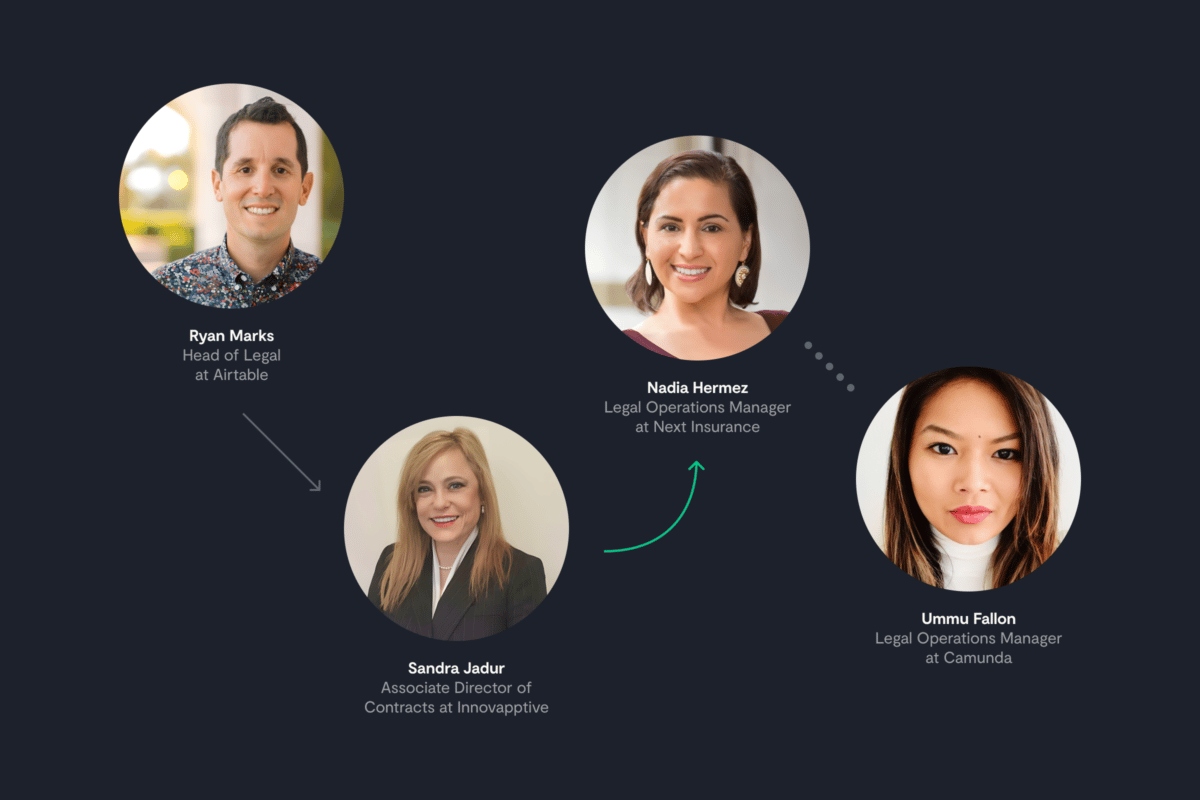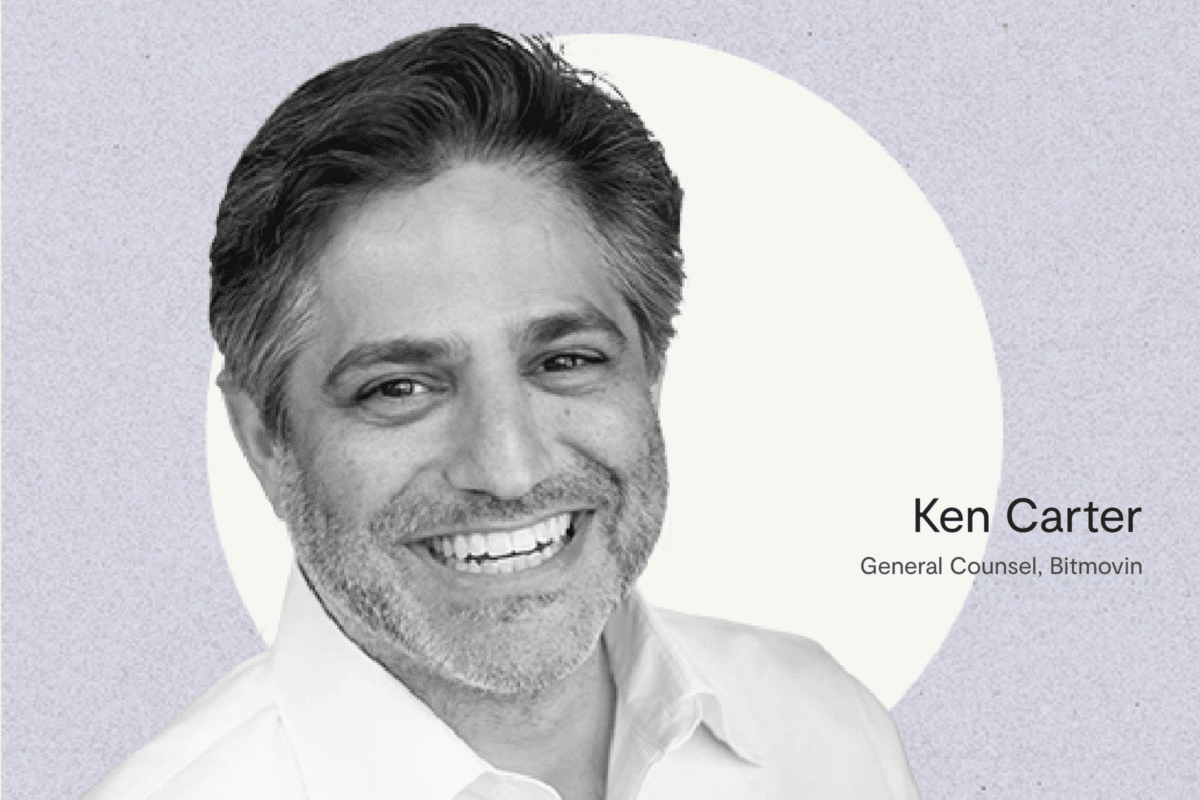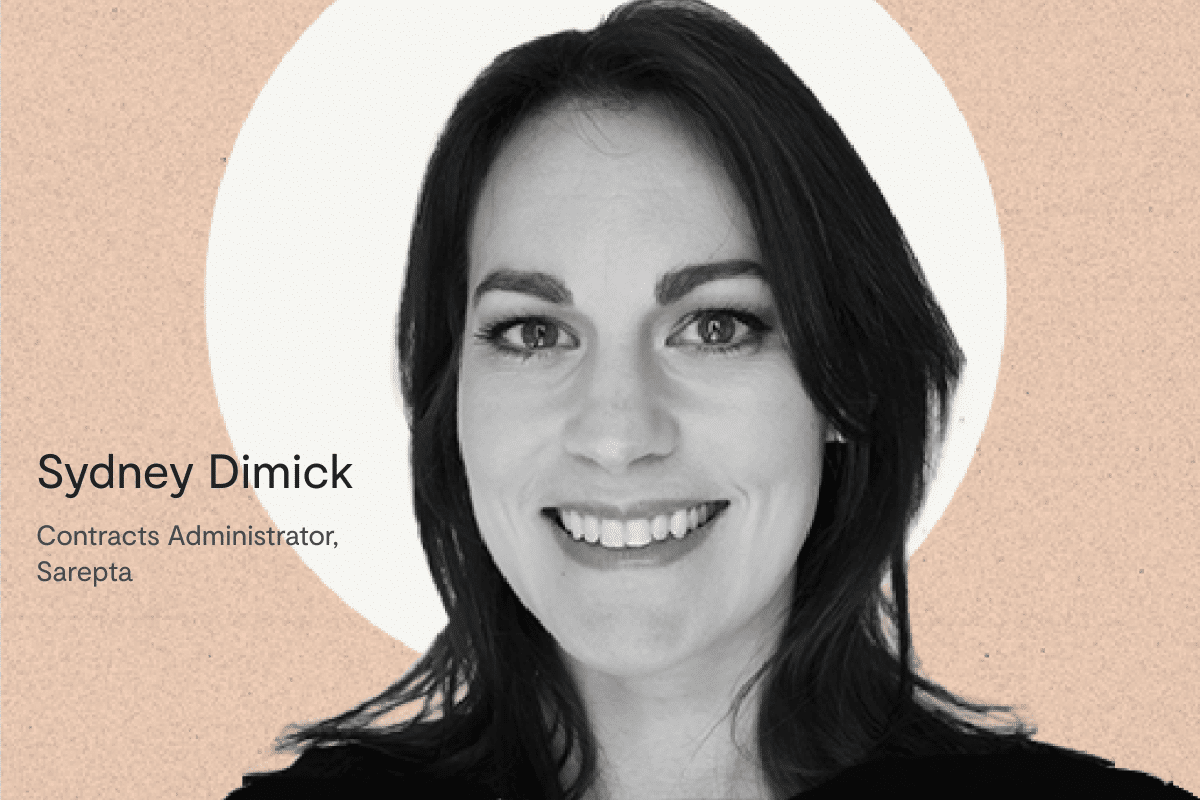We need to make sure internal controls don't stop someone from doing their job, but actually enable them to do their job in the most efficient way possible. That's where things like Ironclad really helped us level up.
At State of Digital Contracting (SDC) Summer, David Wieseneck told the story of how he was able to complete diligence for an unexpected round of fundraising in just two weeks.
Thank you so much for chatting with me, David. I know you’re sharing your story today for SDC, but as background, I was hoping you could tell me a little bit more about your current role, your company, how you got there – like a good origin story.
Currently I’m at Demostack, VP of Finance. I knew our CEO from a previous company, he was a product manager and I was his design partner for a new product that he was putting out. And when I heard that he was going off to build something new, and he was in stealth mode, I said, “Cool, dude, let me know when you need someone to run finance. And I’d love to come join whatever you’re working on. I’ve always enjoyed working with you.”
And so as they were starting to build the first version of their product and start talking to investors, he asked me to build their first business model. And I had a little free time, so on the weekends, I just built him a business model, and just built in the business. They raised funding. And then about six months later, he said he needed someone full time. So I jumped at the opportunity to join, and we’ve been growing ever since. And things are really good.
I love that. Any cold feet making the jump?
It’s exactly where I want to be, the type of product I want to be working on, the exact position that I’m extremely well-suited for. So I’m extremely happy with where I’m at.
The fun thing about being in finance is that I have full view of what’s going on in the company, because all of the contracts passed through finance and legal which I oversee.
If you had to summarize a typical day, what does that look like for you? What teams do you work with, and what are you working on?
No day is typical. It’s a start up, so every day is a little bit different. But I would say normally, I’m reviewing some sales contracts, NDAs for customers. And we’re reviewing that with legal, getting that into the hands of our sales team, so they can close the deal, or send it back to the customer or the prospect. Usually reviewing at any given time, also with legal, one or two procurement contracts that we’re negotiating or getting from someone in the company that wants to buy software, or a new recruit or something like that, talking with our bookkeepers about the transactions that have happened in the past month, and how to code it correctly. And then talking with our leadership team, and updating our financial forecast based on what’s going on on the ground. What we’re seeing both externally and internally, and then adjusting our strategy and our financial model, based on what’s going on in the business. So a little bit of everything.
That’s the fun thing about being in finance is that I have full view of what’s going on in the company, because all of the contracts passed through finance and legal which I oversee. Someone smarter than me told me one time that a business is just a sum of all of its contracts, it’s literally the entire business. So I get a full preview of what’s going on in the business at any given moment where I’m sitting, and I think that’s really cool.
Wow, you’re doing everything!
At a startup, it’s changing so fast. Our competitive landscape is changing, our product is changing, the needs of our customers are changing. And the world around us is changing so fast. So we have to make decisions, change strategy, pivot on execution pretty quickly.
Do you have a favorite part of the work that you touch?
I think my favorite part is working on my financial model. I go home in the evening, I’ll curl up by the fire with a nice glass of wine and work on my financial model. And my wife’s like, “I’m gonna read a book” and I’m like, “I’m gonna work on my financial model.” I like that because I can really think about where we are today, where we want to go, where we want to be, then how that’s going to impact the micro decisions that we make from SMA business all come from that high level strategy. And they need to show up in the business model. So I think that’s my favorite part.
And how do you know you’re doing a good job? What does doing a good job look like for you? Is it targets you hit? Or a feeling you get?
I think there are two aspects of doing a good job. One is leading the strategy and the financial planning, leading the company on a path that will lead to success as a business, right profits, and return of capital to our investors. So I think that’s how I know I’m doing a good job is like, we have a strategy and we’re executing against that strategy. And we can look back and say, Yes, we, we did that, or we need to pivot or we’re slightly off the mark.
I think the other part that makes me super happy is giving time back to my team. So systems like Ironclad and other tools and systems, applications, software that we implement, I’m always looking to meet my employees where they are, make their lives easier, so they can go back to doing what their job is, right? Nobody likes to get a contract approved. That process takes time, right? Nobody likes getting it signed, it used to be signed on paper, obviously, now we have tools, we can do it digitally. Nobody likes doing expense reports, nobody likes- you know, you’re filling out Salesforce, and all the details that have to go into it and you don’t even realize it.
So how can we automate? How can we use tools with good user experiences, good user interfaces, integrate them, so that we don’t have to do double entry, we don’t have to do all the stuff we don’t like to do, we just get the output that we like using technology to do that. So I like to implement technology to make my team’s lives easier. And when things are going off the rails or, or they’re not going down the path that I think is the most efficient path, I listen to what they’re doing and why. And I then re-architect whatever system or tool or process or policy that we have, so that we get the outcome that we’re looking for.
There is this really good quote and I wish I knew who it was but it goes something like every system gives you the exact output it was designed to give. And I think about that all the time. Because if something’s going wrong, you’re like, okay, well, I designed it. And I thought about these things. But if it’s not efficient, if your team’s not enjoying it, if it’s not giving you the right output, that’s somewhere in your design you can and should change.
And I think a lot of people will either use a carrot or stick on their team to get the outcome you’re looking for. And I don’t believe in carrots or sticks, right? I believe in designing a system, where to get from point A to point B, a system or process your job to get from point A to point B is the most efficient way. So that the person doing it, who we’re all lazy, but lazy in a good way not lazy in the bad way, right, we all just want to do our job to get from point A to point B. And we’re gonna take the shortest paths to get there. So let’s design the process and pick the tool, the policy, so that they can do the shortest path, get the outcome we’re looking for, without having the need to go off that path. So illuminate the path, take away any roadblocks or boulders that are in front of them. And then let them find the easiest way to get it done. And that’s the way we want them to do it. That’s how I think about things. And then you don’t need a carrot or a stick. And people just gravitate to the system or to the process that you put in front of them because it’s the best, most efficient way to get something done.
This is such a weird analogy but I’m thinking about an ant farm or slim mold tests, where there’s a maze and you test the fastest, most efficient way through that maze.
Yes! Or like any college and you look at like the quad, right? You see all these criss crosses going through. And what happened is they didn’t have any paths there. No, they didn’t want people walking on the grass, they noticed that there was a path. So they paved over the path, and that’s why the criss crosses are so strange. And that’s where you’re like, you know what, let’s make the way that people want to go, the best way to do it, let’s pave the path. Let’s make it easy for them and take away any roadblocks in their way to get from point A to point B.
At my first company, Ironclad was already purchased and implemented. Because I knew it from a previous company, I knew I wanted to work with it again at Demostack.
What is priority number one or top of mind for you and your team right now?
I’m always thinking about how can I make my team more efficient, using the tools and the processes that we need to get really good financial statements, right? At the end of the day, I need good financial statements, and they need to increase revenue and decrease costs. And the way we do that is building a controlled environment, right? Internal controls. But we need to make sure those internal controls don’t stop someone from doing their job, but actually enable them to do their job in the most efficient way possible. That’s where things like Ironclad really helped us level up. To achieve that.
You’re so podcast-ready! How big is your team right now?
The finance team? Small. I think we just hired our third person on the team, so it’ll be four.
Have you had any a-ha leadership moments? You have your philosophy on no carrots and no sticks, which I love, but what else? What was it like going from an individual contributor creating plans with a glass of wine to running a team?
There was an aha moment for me, which was “don’t mess with people’s money.” Okay, so I make sure everybody gets paid on time, then I make sure that everybody gets paid back any money that they loaned the company, they get paid back quickly. Don’t mess with people’s money. That’s like the bare minimum that I need to do from a finance perspective.
And then if you’re able to do that, and you’re able to get your day job out of the way, closing the books and building forecasts or whatever, you can then be in a position to advise the company and really support the other leaders in the organization. And if I can support them, I can go back to them to ask them for input back into the financial model: oh, tell me about what your plans are for the next year. Why are you doing that? Why do you need this tool? Well, have you thought about this? Because I’m advising them and giving them value, it’s really easy when I have an ask, and they’re willing to partner with me and provide value back. And I don’t have to carrot them, I don’t have to stick them. It’s just natural because we’ve built a relationship.
So for me, I think that’s been an a-ha moment — I never want the finance team, or the accounting team or the legal team to be the team of N. It’s always going to be, for me, “Yes, I want to help you achieve that. Now, how do we do it in a safe way? Here are the risks, here are the opportunities. So let’s go achieve what we want to do. Yes. And here’s how we do it in a safe manner.” I think if I do that, I win a lot of “political capital”, I guess it is internally. And that political capital, I can then spend on new initiatives.
100%. People have to want to work with you. And I think sometimes it gets lost.
You’re like, “Yes. And here are the risks. Do we really think these risks are worth it?” And they’re like, “Maybe not,” and you’re like, “Okay, well, that’s your decision to the initiative. I didn’t say no.”
Okay, I promise we’ll set you free In a few seconds but I did want to ask you more directly about Ironclad. How were you involved with the evaluation process?
I’ve been ironclad customer at two companies. The first one was back in the day before you had Workflow Designer. We couldn’t do anything ourselves, any small change, we had to wait for the legal engineers to build it for us. This company, we had just purchased it like a month or two before I joined. And then someone on the team who’s in charge of legal and finance, who did a great job in selecting that for everyone was like, “Here you go.” And then I took a look at the implementation and made some changes and really set us up for a scaling success.
So at my first company, Ironclad was already purchased and implemented. Because I knew it from a previous company, I knew I wanted to work with it again at Demostack.
One more question and then let’s go to launch. Do you have any advice for other VPs of Finance or really anyone looking to purchase Ironclad? What’s your takeaway for that person?
It’s a good question. Figure out what your biggest pain point is. Solve for that. Get a win on your biggest pain point. And then use that political capital to solve for the next pain point. Don’t try to do everything at once. There’s a lot you can do with the system. Focus on your biggest pain point, solve for it. Roll it out, let everybody kind of gravitate towards the system. And then naturally, you’ll tackle the next process and the next process, and you’ll realize that all of your legal processes, all of your contracts are now living within Ironclad and it becomes your source of truth for all your contracts.
Ironclad is not a law firm, and this post does not constitute or contain legal advice. To evaluate the accuracy, sufficiency, or reliability of the ideas and guidance reflected here, or the applicability of these materials to your business, you should consult with a licensed attorney. Use of and access to any of the resources contained within Ironclad’s site do not create an attorney-client relationship between the user and Ironclad.



